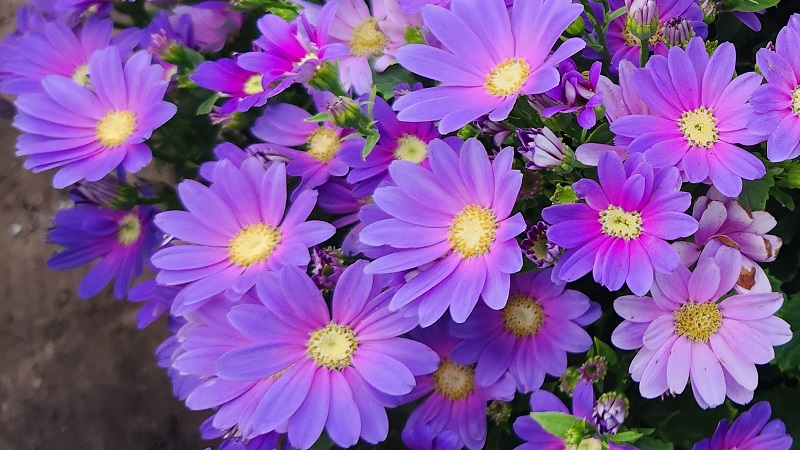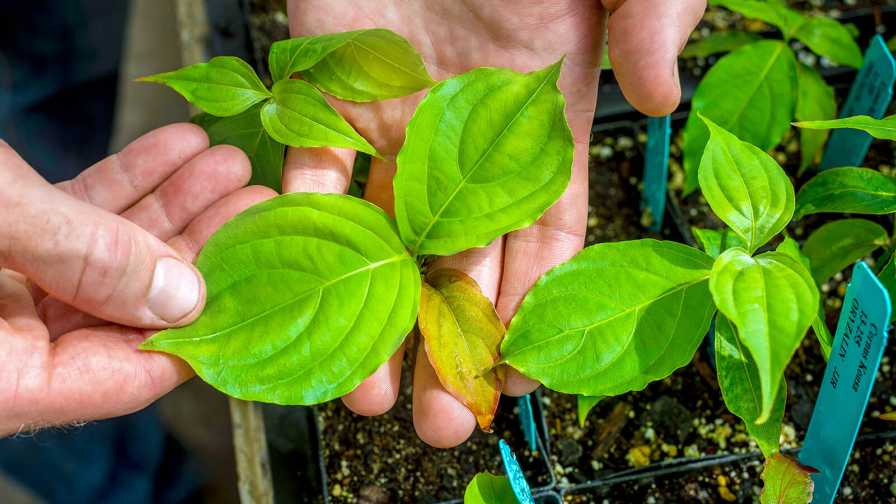7 Tips For Protecting Impatiens From Downy Mildew
Last year’s outbreak of downy mildew in Europe virtually destroyed the crop and caused garden centers and mail-order catalogs to discontinue stocking it in favor of less problematic crops. A nationwide outbreak here in the United States is probably a stretch because regions experience vastly different environmental conditions. Still, downy mildew was spotted on impatiens on both coasts last year, so growers should be on high alert for the disease.
“Impatiens grown in many areas of the United States may never be infected with downy mildew,” says Dr. Colleen Warfield, Plant Pathologist for Ball Horticultural Company. “Other areas may only see this disease sporadically. But if growers and landscapers are not aware of this disease and how to manage it, it certainly has the potential to develop into a far more devastating disease.”
Speedling’s Mike Friddle, who was named Greenhouse Grower’s 2011 Head Grower of the Year, says he is confident the industry can stay ahead of the downy mildew issue with sound, preventative practices and open communication with suppliers and plant pathologists.
“By working together with a common goal to protect this crop, there is good reason to believe we can grow it, even if there are isolated future cases,” Friddle says.
So how can you protect impatiens in your greenhouse? Here are seven steps to follow.
1. Know The Cause
Downy mildew can be introduced into growing facilities either on infected material via plugs, cuttings or plants, or by wind-dispersed aerial spores from infected plants in the landscape, says Warfield.
“If growers are propagating or finishing plant material in a region where Impatiens walleriana are being simultaneously grown in the landscape, these growers have a much higher risk of their crop becoming infected with impatiens downy mildew due to airborne spores,” she says. “Growers in these regions will need to be especially vigilant in scouting for early disease symptoms, protecting their crops preventively and carefully monitoring the environment to minimize both humidity and extended periods of leaf wetness.”
2. Start With Clean Plants
For growers at every level, purchasing disease-free plant material is a critical step toward avoiding disease issues. Because there is no evidence for seed transmission of downy mildew, impatiens grown from seed are initially free of the disease, according to Warfield.
Vegetative impatiens grown from clean stock, however, can still have a latent infection. She recommends growers separate seed- and vegetative-grown impatiens, as well as material from various sources, to reduce cross contamination.
Finished growers should always order their young plants from suppliers who are known for clean production and following manufacturers’ production recommendations, Friddle says.
“Growers must isolate the plug trays from other Impatiens walleriana and Impatiens pallida and capensis, all of which can host the disease,” Friddle says. “Then, inspect all trays prior to transplant.”
3. Scout For Symptoms
Growers must implement a strict scouting program and educate employees to recognize pathogen symptoms. Young plants should be carefully inspected for signs and symptoms of downy mildew upon arrival. The pathogen is systemic, so once a plant is infected, any potential management practices are ineffective. Plants showing symptoms must be diagnosed, removed and destroyed immediately.
“Carefully scout cutting-raised material for symptoms, especially during the first 11 to 14 days when plants are likely to have been placed under a mist system,” Warfield says. “It’s very important to look at the underside of the leaves for the characteristic white, downy-like growth or sporulation, keeping in mind it may be very sparse and barely visible without a hand lens. Use other visual cues such as leaf stippling, chlorosis and downward curling of the leaf margin to detect potentially infected plants.”
4. Destroy Infected Plants Immediately
Once symptoms have been identified, one of the most important sanitation measures is to dispose of infected plants.
“If an infected, sporulating plant is discovered in the growing facility, place the plant in a bag and seal it before moving it out of the greenhouse to minimize the spread of spores,” Warfield says. “These airborne spores are rather short-lived and won’t survive for long on dry, inanimate surfaces. So while it is always a good practice to disinfect the bench area where any diseased plant was growing, the aerial spores do not pose a long-term sanitation issue.”
5. Apply Fungicides Preventively
Growers should plan a chemical control strategy that will keep downy mildew in check all season long, at retail as well as in the garden setting, says Cornell University Plant Pathologist Margery Daughtrey.
“Growers bringing in plants from another business must treat on arrival with a systemic fungicide, unless the supplier has just made a treatment,” she says. ”Some may want to treat with fungicides that have different modes of action in rotation; others may want to watch for symptoms before discarding diseased plants and protect the remainder of their crop for the rest of the season.”
Preventive fungicide applications should be made at timely intervals, especially if growing at the same time that Impatiens walleriana are present in the landscape.
“Apply fungicides preventively beginning about two weeks after sowing or sticking, and re-apply them on a weekly schedule,” Warfield says. “Be careful to rotate among effective products that have a different mode of action (as designated by the Fungicide Resistance Action Commitee) to avoid the development of fungicide resistance within the pathogen population.”
6. Inform Retail Customers
Retailers should be informed that although plants may be healthy at their stores, they can be infected once planted into the landscape. Instruct retailers to avoid using impatiens in the same flowerbeds planted with impatiens in 2011 to avoid a reoccurrence of the disease due to overwintering, Daughtrey says.
7. Consider Alternatives
Research shows some plants are not susceptible to downy mildew. This makes them good choices for growers to offer landscapers and gardeners in order to help minimize the disease. Among the unaffected plants are Sakata’s SunPatiens and Ball FloraPlant’s Celebration and Fanfare New Guinea trailers.










